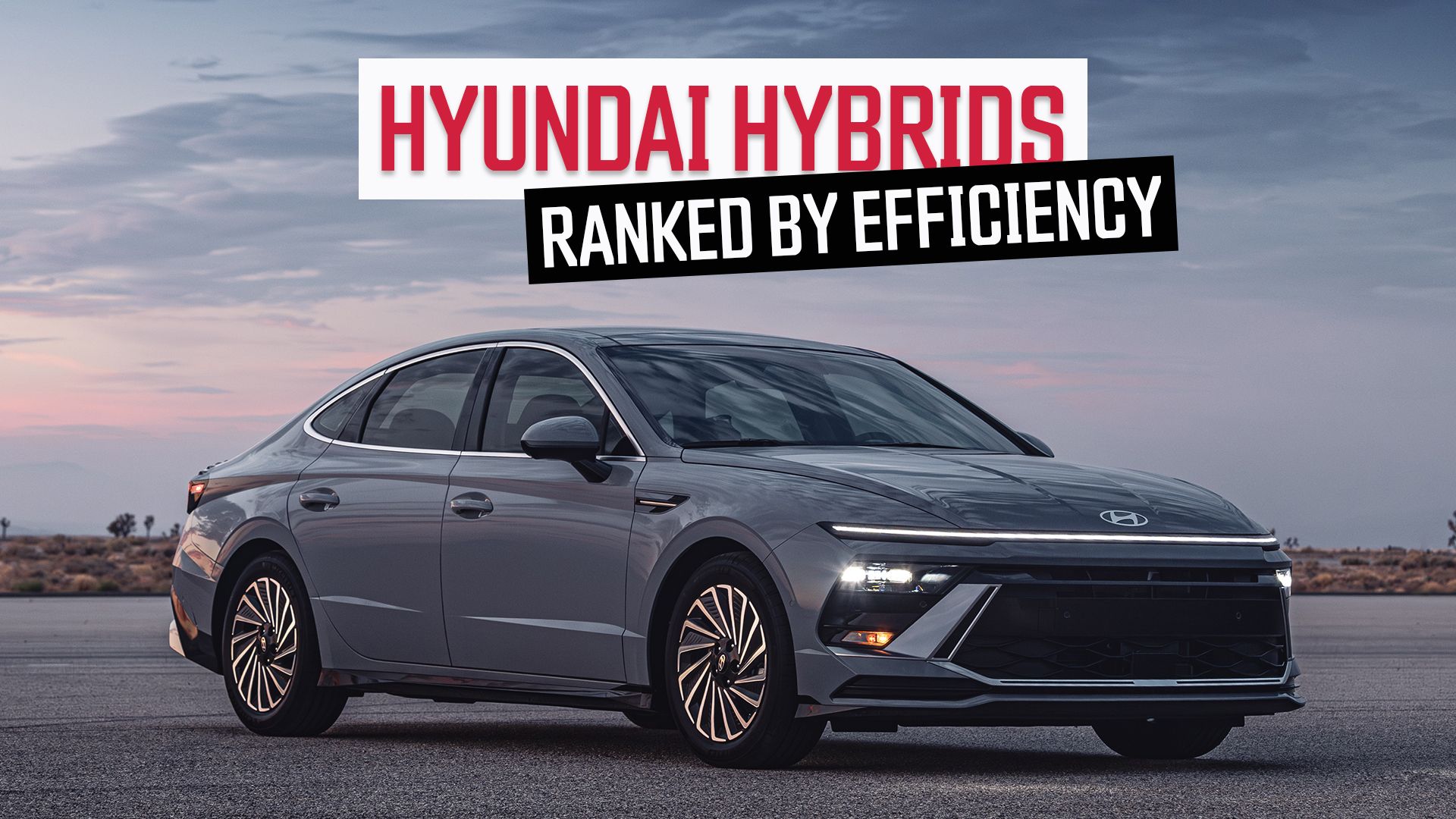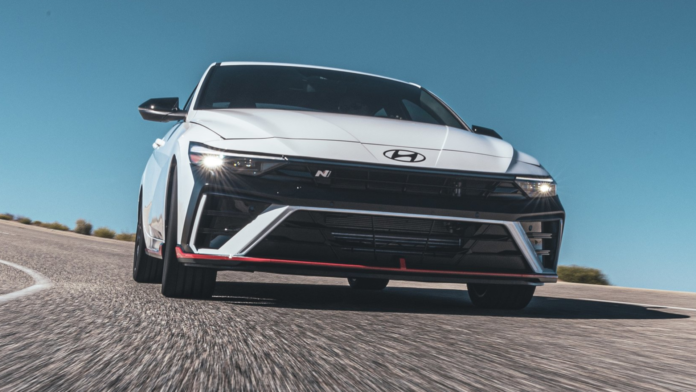Hyundai vehicles have never typically been known for having big power. That is, until recently, with the release of some performance models like the N-Line, or the new 601-horsepower, all-electric Hyundai Ioniq 5. The automaker has come up with a few powerful mills, despite them never really being mentioned in a way which could garner attention. With the fall of so many V8s these days, it’s best to try and quantify each one we’ve lost, and Hyundai’s got a couple which few knew about.
Hyundai
Hyundai Motor Company was founded in 1967 by Chung Ju-yung, 20 years after the birth of the Hyundai Engineering and Construction Company. The automotive marque’s first model was the Cortina, birthed with the help of Ford in 1968, while its first self-developed car arrived the year after as the Pony. Since then, the company has found success with affordable cars and has consistently become known for reliability and value. Nowadays, its ventures vary from combustion, hybrid, all-electric, and hydrogen mobility solutions to robotics.
- Founded
- 29 December 1967
- Headquarters
- Seoul, South Korea
- Owned By
- Hyundai Motor Group
Because of Hyundai’s past silence regarding some of their engine’s power figures, CarBuzz decided to find the 10 most powerful Hyundai engines ever fitted to production cars, and rank them by their horsepower output. After all, much like a schoolyard secret, Hyundai’s ability to keep their power numbers under wraps will eventually be foiled.

Related
Hyundai Hybrid Cars Ranked by Efficiency
We rank every Hyundai Hybrid model on sale today, from least to most fuel efficient.
10 Lambda II MPi 3.0-Liter V6
|
Horsepower |
247 hp |
|---|---|
|
Torque |
208 lb-ft |
|
Years Produced |
2011–2019 |
|
Application(s) |
2011–2019 Hyundai Azera |
The first and least-powerful engine on this list is the Lambda II MPi 3.0-liter V6 makes a respectable 247 horsepower. It was produced for about eight years, and, interestingly, the V6 only saw one application, whereas most other modern Hyundai engines see applications in at least a few models. Regardless, the engine was deemed perfect for the Azera, and literally nothing else.
9 Omega 4.5-Liter V8
|
Horsepower |
266 hp |
|---|---|
|
Torque |
275 lb-ft |
|
Years Produced |
1999–2008 |
|
Application(s) |
1999–2008 Hyundai Equus |
Next up is another one-off engine, but this one, the Omega, was a V8. Hyundai has only produced a couple of eight-cylinders in its time, but each one is noted for its smooth operation, rather than its power output. Those who bought Hyundai’s flagship sedan, the Equus, from 1999 to 2008, had to make do with just 266 horsepower. By contrast, someone who decided to buy a Mercedes S-Class in similar model years would have been treated to multiple engine choices, including a V12 option.
8 2.0L Turbo GDI
|
Horsepower |
276 hp |
|---|---|
|
Torque |
289 lb-ft |
|
Years Produced |
2009–Present |
|
Application(s) |
Hyundai Elantra N, Hyundai Veloster N, Hyundai Kona N |
Hyundai’s hot 2.0-liter four-banger makes it onto our list in its most powerful iteration, sporting 276 horses and a larger turbo than was seen in previous years. The engine itself has seen a wide array of applications, starting in 2009 with the Hyundai Sonata. Kia, Hyundai’s sister company, also had four versions of the 2.0-liter Turbo GDI. As of today, only the Hyundai Elantra N and i30 N still carry the engine.
7 Smartstream G2.5T
|
Horsepower |
277 hp |
|---|---|
|
Torque |
311 lb-ft |
|
Years Produced |
2020–Present |
|
Application(s) |
Hyundai Santa Fe, Hyundai Santa Cruz, Hyundai Sonata |
Hyundai’s large 2.5-liter four-banger earns the seventh spot on our list. Its most notable application is the new Hyundai Santa Fe. If you’re not sure if you’ve seen one on the road yet, it’s because you most likely haven’t, as the new Santa Fe is straight out of a retro-futuristic fever dream. The 2.5-liter turbo found under the hood of it, along with a few other models, can also put out an impressive amount of torque for its size thanks to its turbocharger.
6 Lambda II MPi 3.5-Liter V6
|
Horsepower |
286 hp |
|---|---|
|
Torque |
248 lb-ft |
|
Years Produced |
2011–Present |
|
Notable Applications |
Hyundai Santa Fe, Hyundai Azera, Kia Carnival |
Another member of Hyundai’s wide-reaching Lambda V6 family enters the chat. This time, it’s a 3.5-liter, naturally-aspirated unit putting out nearly 290 horsepower. This V6 didn’t actually debut in a Hyundai, but instead was first seen installed in the 2011 Kia Sorento, before Kia moved on to an inline-four. It utilizes nearly identical tech to the 3.3-liter and 3.8-liter Lambda engines, which we’ll touch on later.
5 Lambda II RS MPi 3.8-Liter V6
|
Horsepower |
312 hp |
|---|---|
|
Torque |
265 lb-ft |
|
Years Produced |
2008–2018 |
|
Notable Applications |
Kia K900, Hyundai Equus, Hyundai Genesis |
Speaking of other Lambda engines, the next one on our list comes to us in its 3.8-liter, MPI iteration. It’s the first engine here to make over 300 horsepower, despite it being an older mill. However, it received some unique upgrades to help the all-aluminum engine achieve that power, including 24-valves and Hyundai’s variable valve timing system called Dual CVVT, or Continuously Variable Valve Timing, which controls the opening and closing timing of the engine’s valves to increase engine performance.
4 Lambda II RS GDi 3.8-Liter V6
|
Horsepower |
348 hp |
|---|---|
|
Torque |
295 lb-ft |
|
Years Produced |
2011–Present |
|
Notable Applications |
Genesis G80, Genesis G90, Hyundai Genesis, Hyundai Equus |
This version of the Lambda 3.8-liter received a power-up. The GDI V6 comes equipped with direct fuel injection, and ups the horsepower from 312 to 348. It also sports a higher compression ratio, which measures at 11.5:1. The engine could be found in sedans, like the Equus, and Genesis G80, as well as enthusiast cars, like the Hyundai Genesis coupe. A newer version of the engine is still used, but offers fewer horsepower in light of improved fuel efficiency.
3 Lambda II RS T-GDi 3.3-Liter V6
|
Horsepower |
365 |
|---|---|
|
Torque |
376 lb-ft |
|
Years Produced |
2015–Present |
|
Notable Applications |
Genesis G70, Genesis G80, Genesis G90 |
The final Lambda V6 on the list comes as a 3.3-liter twin-turbo. As Hyundai has phased out its few V8s, the 3.3-liter turbo is here to take its place as the powerhouse engine option. It’s been around for nearly 10 years now in various iterations and is the engine you’d want if you’re in the market for a Genesis G70. Sadly, it’s service has ended on the Genesis G80 and G90, but is still offered on the Kia K9 in select markets.
2 Tau 4.6-Liter V8
|
Horsepower |
385 hp |
|---|---|
|
Torque |
333 lb-ft (With Premium Fuel) |
|
Years Produced |
2008–2012 |
|
Notable Applications |
Hyundai Equus, Hyundai Genesis, Kia Mohave |
The first V8 has entered the list in the form of Hyundai’s 4.6-liter Tau. It was another short-lived motor, having only a four-year tenure. It was mainly relegated to Hyundai’s then-flagship sedan, the Equus, and the Hyundai Genesis sedan. The Kia Mohave/Borrego also received the Tau V8, but those of us who live in the U.S. or Europe never got to see them.
1 Tau 5.0-Liter V8
|
Horsepower |
429 hp |
|---|---|
|
Torque |
376 lb-ft |
|
Years Produced |
2011–2021 |
|
Notable Applications |
Genesis G90, Kia K9, Hyundai Equus |
The most powerful Hyundai motor to ever be installed within a production car is the Tau 5.0-liter V8. Sadly, like many other V8s in modern times, it’s been discontinued in favor of engines like the 3.3-liter twin-turbo Lambda mentioned earlier. For the V8’s final iteration, Hyundai bumped its compression ratio up to 11.8:1 from 11.5:1 in order to help achieve its 429-horsepower figure. The Tau 5.0-liter was heralded for its quiet operation and smooth, waft-like power.

